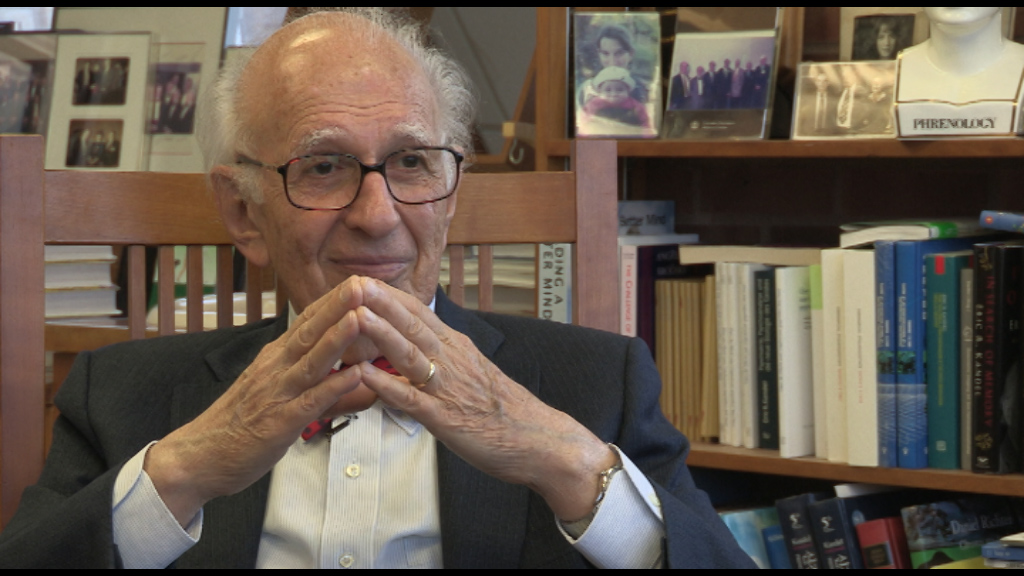NEXT STORY

Recording connections between cells
RELATED STORIES

NEXT STORY

Recording connections between cells
RELATED STORIES


|
Views | Duration | |
|---|---|---|---|
| 31. An exceptionally rewarding year | 75 | 01:14 | |
| 32. Driven to study Aplysia by a sense of adventure | 78 | 01:40 | |
| 33. Being in the right place at the right time | 86 | 01:24 | |
| 34. Setting up my own lab | 76 | 01:28 | |
| 35. Mapping the ganglion | 69 | 00:41 | |
| 36. Recording connections between cells | 65 | 02:27 | |
| 37. Moving to New York | 63 | 02:12 | |
| 38. Division for Neurobiology and Behavior | 95 | 05:08 | |
| 39. Exploring the mechanism behind habituation and dishabituation... | 132 | 04:41 | |
| 40. A good syllabus is like a symphony | 63 | 03:17 |


We first wanted to see whether or not this notion that I had, in which Arvanitaki-Chalazonitis had provided some support for was true. Could you identify many of the cells as unique individuals?
So we began to record from individual cells, we made a map of the ganglion, and we characterized the electrophysiological properties: Was it a silent cell? Was it spontaneously bursting? What was the nature of the spontaneous input? Where was it located? What's its pigmentation? Where did it send its axons? And we found after a while that most of the cells on the ganglion were uniquely identifiable, and we could return to them from preparation to preparation.
Eric Kandel (b. 1929) is an American neuropsychiatrist. He was a recipient of the 2000 Nobel Prize in Physiology or Medicine for his research on the physiological basis of memory storage in neurons. He shared the prize with Arvid Carlsson and Paul Greengard. Kandel, who had studied psychoanalysis, wanted to understand how memory works. His mentor, Harry Grundfest, said, 'If you want to understand the brain you're going to have to take a reductionist approach, one cell at a time.' Kandel then studied the neural system of the sea slug Aplysia californica, which has large nerve cells amenable to experimental manipulation and is a member of the simplest group of animals known to be capable of learning. Kandel is a professor of biochemistry and biophysics at the College of Physicians and Surgeons at Columbia University. He is also Senior Investigator in the Howard Hughes Medical Institute. He was the founding director of the Center for Neurobiology and Behavior, which is now the Department of Neuroscience at Columbia University. Kandel's popularized account chronicling his life and research, 'In Search of Memory: The Emergence of a New Science of Mind', was awarded the 2006 Los Angeles Times Book Award for Science and Technology.
Title: Mapping the ganglion
Listeners: Christopher Sykes
Christopher Sykes is an independent documentary producer who has made a number of films about science and scientists for BBC TV, Channel Four, and PBS.
Tags: Angélique Arvanitaki
Duration: 41 seconds
Date story recorded: June 2015
Date story went live: 04 May 2016